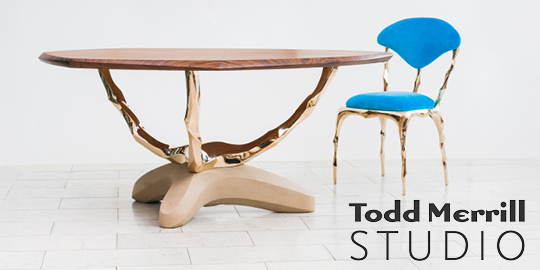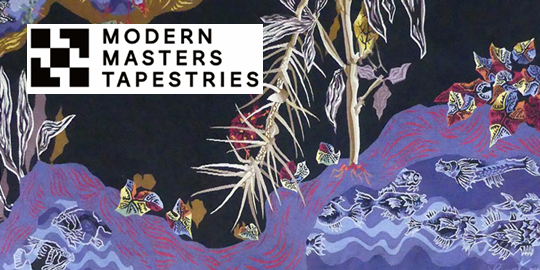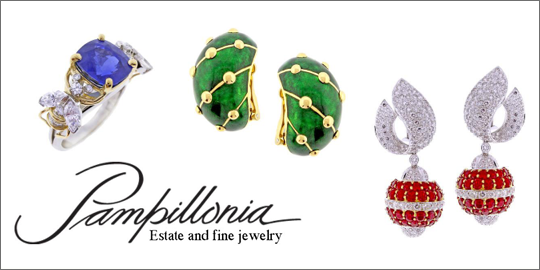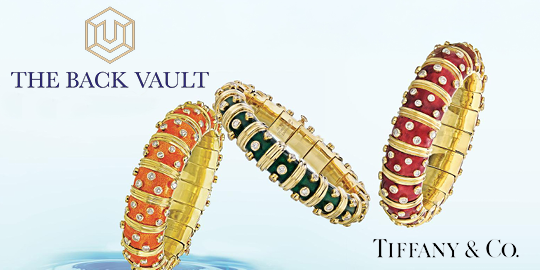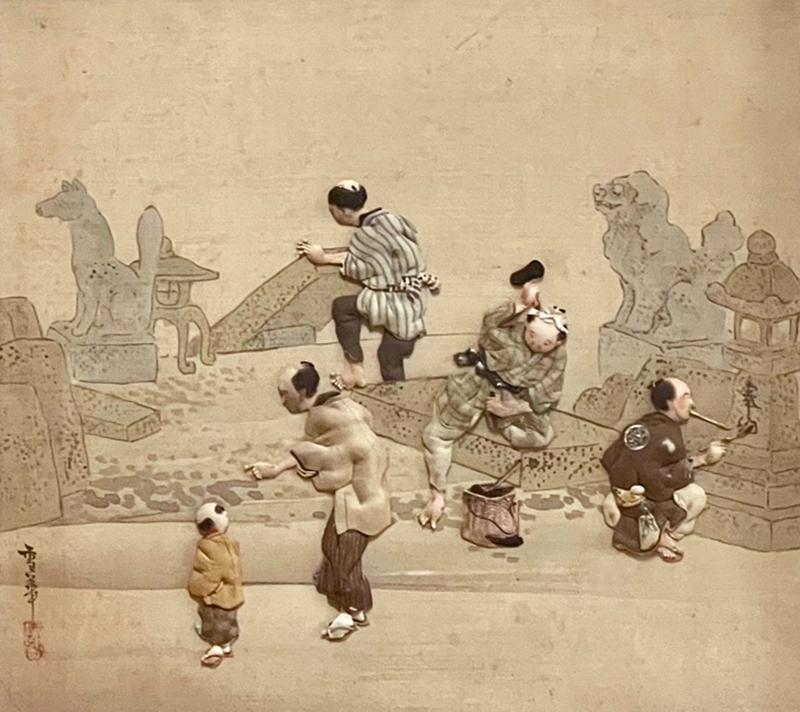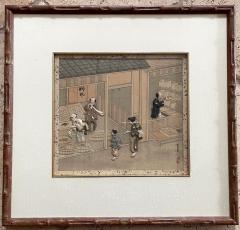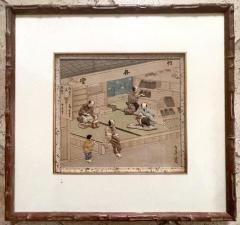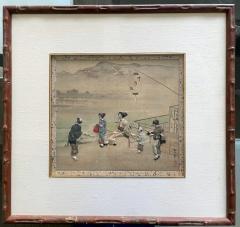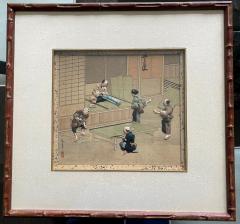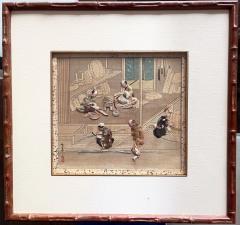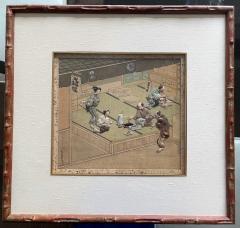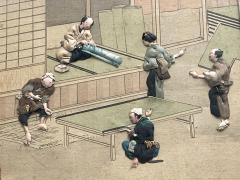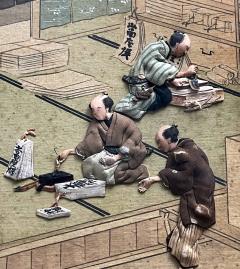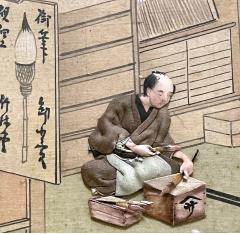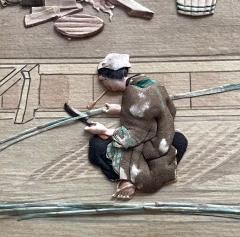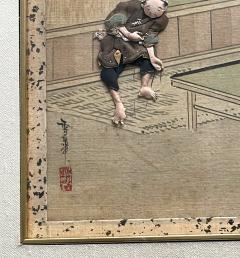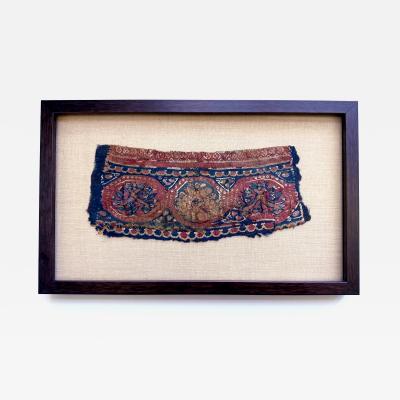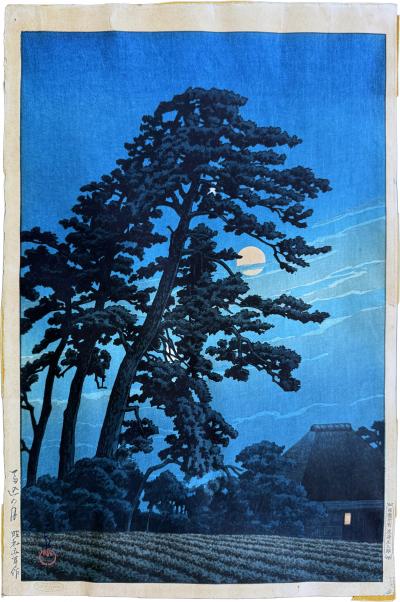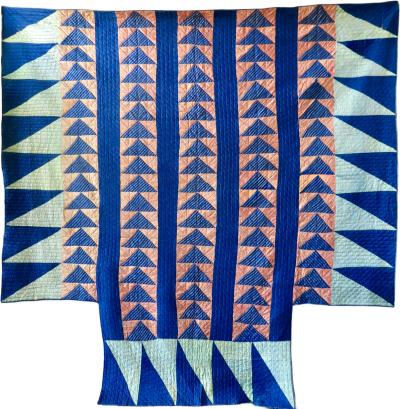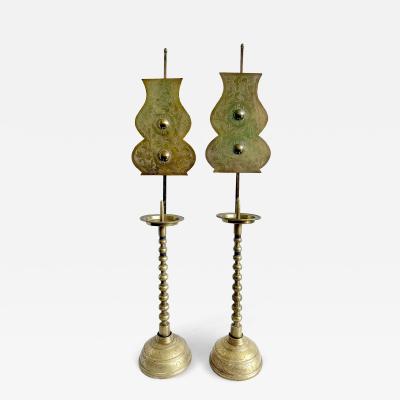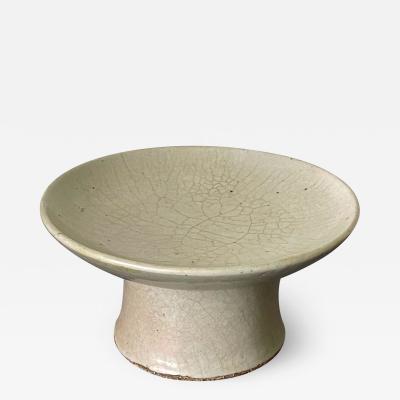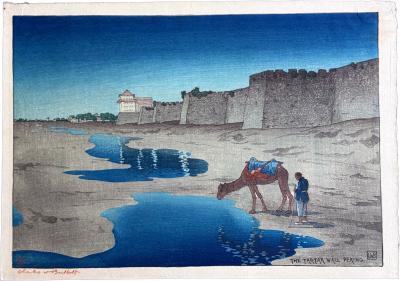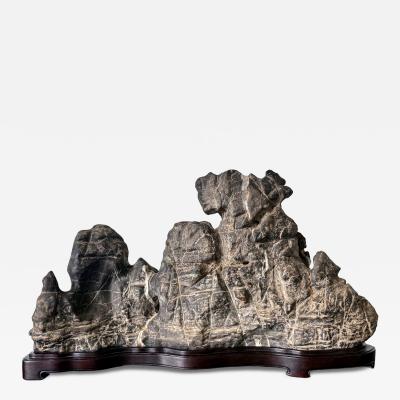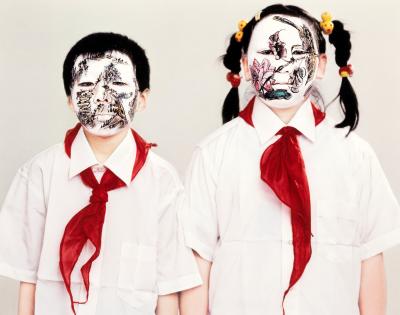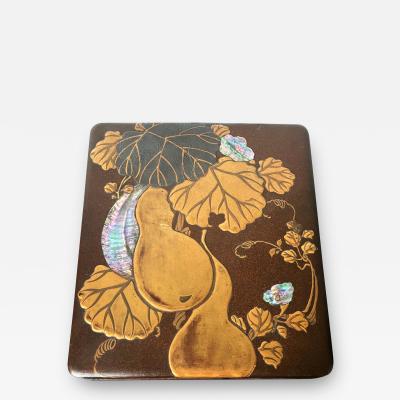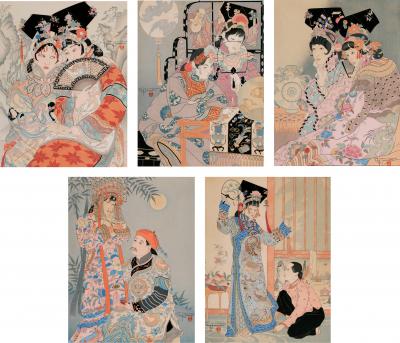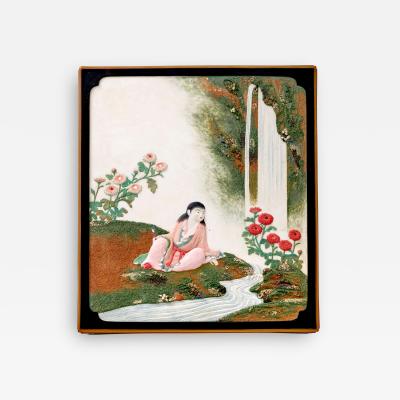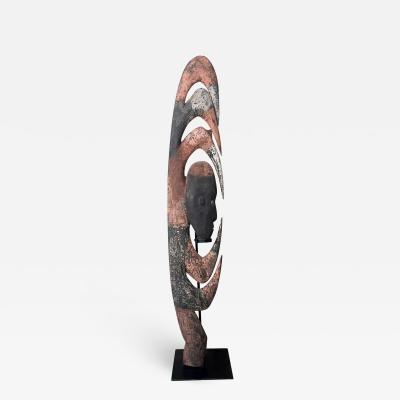- FINE ART
-
FURNITURE + LIGHTING
Shop By Category
Shop By Artist
- NEW + CUSTOM
- DECORATIVE ARTS
-
JEWELRY
Shop By Category
Shop By Artist
- INTERIORS
- MAGAZINE
Showrooms
Rare Set of Framed Japanese Oshi-E Textile Art Meiji Period
Sold
Sold
-
Tear Sheet Print
- Save
- BoardAdd to Board
-
-
Description
On offer is one of the set of seven framed Japanese textile art called Oshi-E circa Meiji Period (1868-1912). This rare set consists of seven panels depicting various aspects of daily life in Edo time with stunning details. These snapshots of moments not only reveal the buzzling commercial activities at the marketplace, but also provide insight into the signages, architecture, costumes and how people interacted within a historical and pictorial context. They are beautifully framed in matching red giltwood frame of faux bamboo form with linen mat and gilt and cork trim. We rarely come across fine Oshi-E textile work, not mentioning a large group such as this. We offer them for sale individually but it will be great for a collector to consider the whole set so that they can stay together.
The set include seven lively scenes that mostly center on specialized merchants and shops with customers: a fabric store, a book-binding studio, a stone carving workshop, a basket-making studio and shop, a bottega that makes and sells brush pens and ink stones, a pastry and tofu house, and finally a lantern-viewing party at a tea house. The realistic rendering and attention to details are not short of "photographic" quality. From the signage of the shops, to the motions and attires of the individual characters, from the hairstyle, small ornaments, down to the facial expression, were all recorded in great details. Each panel was signed with the artist's name Yukihana in Kanji with a red seal.
The Oshi-E (also known as kiritori zaiku) is a type of ornamental textile art dated back to the Muromachi period (1392-1573). It started among the elite aristocratic women in Kyoto before spreading wider in the Japanese society. Throughout Edo and Meiji period, Oshi-E were sometimes used to make offerings to the altars in the temple and in the late 19th century, it was exported to the west along with the other embroidery textile art. Oshi-E was made by using silk wadding to create a relief design. Various silk fabric swaps and sometimes wires and tassels, often recycled from older kimonos among the other pieces, were used to create different desired effects. Much details were focused on the elaborate dresses, head wears, faces, and plants in the setting. Ink and watercolors were used to facilitate the details of the design such as the background painting and the facial detailing. The work was time-consuming and in Meiji period, it was considered as a feminine accomplishment along with ikebana, embroidery and tea ceremony. According to the book: Threads of silk and gold: ornamental textile from Meiji Japan published by Ashmolean museum of art and archaeology University of Oxford, few examples survived to this day.
Reference: Threads of Silk and Gold: Ornamental Textile from Meiji Japan published by Ashmolean museum of art and archaeology University of Oxford. Page 178. -
More Information
Origin: Japan Period: 19th Century Materials: Silk, cotton, giltwood Condition: Good. Fine condition, not examined out of the frame. Creation Date: 1880-1910s Number of Pieces: 6-7 Styles / Movements: Asian, Traditional Patterns: Asian/Oriental, Handmade, Textured, Traditional Incollect Reference #: 448534 -
Dimensions
W. 19.5 in; H. 18 in; D. 0.5 in; W. 49.53 cm; H. 45.72 cm; D. 1.27 cm;
Message from Seller:
Tishu, based in Atlanta, GA, offers a diverse collection ranging from Neolithic art to 20th-century collectibles, with a focus on Mid-century design, Japanese and Korean art, Asian textiles, and Contemporary Aboriginal art. Driven by a passion for timeless beauty, the gallery is open by appointment only and offers works that span 5,000 years of history. Reach them at 305-400-0561 or tishu@tishugallery.com.
Sold
Sign In To View Price
close
You must Sign In to your account to view the price. If you don’t have an account, please Create an Account below.
More Listings from Tishu View all 1048 listings
No Listings to show.
- Antique Japanese Export Silk Embroidery Americana Patriotic Panel
- Framed Antique Coptic Textile Fragment from Byzantine North Africa
- Rare First Edition Japanese Woodblock Print Moon at Magome Kawase Hasui
- Antique American Flying Geese Patterned Satin Quilt with Skirts
- Pair of Antique Korean Brass Candlesticks with Reflector Shields
- Islamic Glazed Pottery Bowl with Kufic Calligraphy Nishapur Ware Provenance
- Korean White Ceramic Stem Dish Joseon Dynasty
- Rare Woodblock Print the Tartar Wall Peking by Charles William Bartlett
- Large Chinese Horizontal Gray Lingbi Scholar Stone with Grotto on Display Stand
- Framed Editioned Contemporary Photograph by Huang Yan
- Japanese Rinpa Style Lacquer Ink Stone Box Suzuribako
- Rare Set of Five Dames Chinoises et Madchoues Woodblock Prints Paul Jacoulet
- Rare Japanese Lacquer Writing Box Suzuribako Meiji Period
- Carved Wood Yipwon Figure from Papua New Guinea






